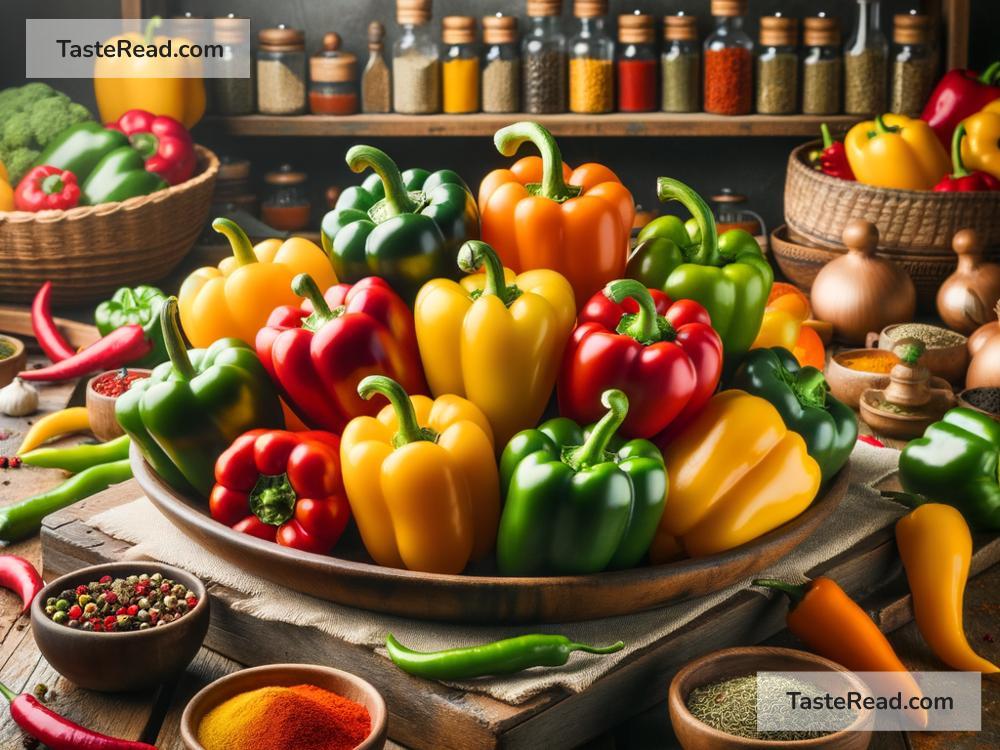The Curious Story of Bell Peppers in Global Cuisines
When you walk into a kitchen anywhere in the world, there’s a good chance you’ll find bell peppers waiting to add color, crunch, and sweetness to a dish. Bell peppers, often called capsicums or simply “peppers,” are a versatile vegetable (or fruit, to be botanically correct), loved in cuisines from Asia to the Americas. But have you ever paused to wonder where they come from and how they became a global culinary staple? Their journey is as vibrant as their colors.
A Native of the Americas
Bell peppers, like tomatoes, potatoes, and corn, are native to Central and South America. They belong to the species Capsicum annuum, a member of the nightshade family. Indigenous peoples of the Americas were cultivating peppers long before Europeans arrived. These plants weren’t just used for food; they were important in medicine, rituals, and even trade.
Unlike their spicy relatives—chili peppers—bell peppers are sweet and mild because they lack capsaicin, the compound that gives chili peppers their heat. Early on, farmers selected peppers for their vivid colors and gentle taste, creating the beloved varieties we know today.
The Bell Pepper’s Journey to Europe
Bell peppers made their way to Europe in the late 15th and early 16th centuries, after Christopher Columbus and other explorers returned from the Americas. At first, Europeans didn’t quite know what to do with them, as peppers were unfamiliar in European cooking at the time. But with curiosity and experimentation, peppers soon became part of European kitchens, appreciated for their versatility and ability to complement many dishes.
Their name, “pepper,” is somewhat misleading. Europeans named these fruits after black pepper (the spice) because of their piquant flavor, even though bell peppers are unrelated to black peppercorns. Today, their sweet flavors have earned them a place in salads, soups, and stews across many European cuisines.
A Global Superstar
As trade spread across continents, so did the bell pepper. Travelers and merchants carried it from European ports to Asia, Africa, and beyond. Different regions embraced bell peppers, adapting them to fit local flavors and cooking styles. Let’s take a journey around the world to see how bell peppers became such a culinary superstar.
Europe
In countries like Spain and Italy, bell peppers shine in rustic, hearty dishes. In Spain, they are a key ingredient in pisto, a warm vegetable stew similar to ratatouille. Grilled red peppers are often served with olive oil, garlic, and salt to bring out their natural sweetness.
In Hungary, bell peppers play a starring role in lecso, a paprika-forward stew made with tomatoes and onions. Hungarians love bell peppers so much that they also stuff them with ground meat and rice and bake them in rich sauces.
Asia
Bell peppers have been wholeheartedly embraced in Asian cuisines. In China, stir-fried bell peppers pair perfectly with meats like beef or pork, often flavored with soy sauce, ginger, and garlic. Their crunch makes them an essential ingredient in quick, wok-based cooking.
In India, bell peppers—known as “capsicums”—are used in curries, rice dishes, and street food favorites like stir-fried noodles or stuffed peppers. Their mild sweetness balances spices like turmeric, cumin, and chili powder beautifully.
Americas
Back in their native lands, bell peppers remain a favorite. Mexican cuisine, for example, uses them in dishes like chiles rellenos, where large green bell peppers are stuffed with cheese or meat, then battered and fried. Bell peppers also feature in fajitas, adding their signature crunch to sizzling strips of meat and onions.
In Cajun and Creole cooking in the southern United States, bell peppers are a key part of the “holy trinity”: bell peppers, onions, and celery. These three ingredients form the base of many dishes, including jambalaya and gumbo.
Africa
In North Africa, bell peppers are often roasted and incorporated into dishes like Moroccan tagines or dips, such as matbucha, which combines peppers and tomatoes. West African cuisines also use bell peppers in spicy stews and soups, blending their sweetness with the heat of chili peppers for a balanced flavor.
A Rainbow of Benefits
Bell peppers come in a variety of colors, including green, red, yellow, and orange. Each color has its own distinct taste and ripeness level. Red peppers are the sweetest because they’re fully ripe, while green peppers are slightly more bitter. No matter the color, bell peppers are packed with vitamins and nutrients, especially vitamin C, vitamin A, and antioxidants.
Their health benefits have further cemented their place in the diets of people around the world. Whether you eat them raw, roasted, stuffed, or stir-fried, you’re not only enjoying a delicious meal but also doing your body a favor.
The Bell Pepper’s Cultural Legacy
Today, bell peppers are celebrated not only for their flavor but also for their cultural significance. They connect cuisines across continents, telling a story of global trade, adaptation, and culinary creativity. From the markets of Mexico to the spice shops of India, from European farms to Chinese kitchens, bell peppers have become a universal ingredient that transcends borders.
Next time you slice into a bell pepper, think about its curious journey across continents and cultures. It’s a simple vegetable with a complex history—one that proves the power of food in bringing the world together.


